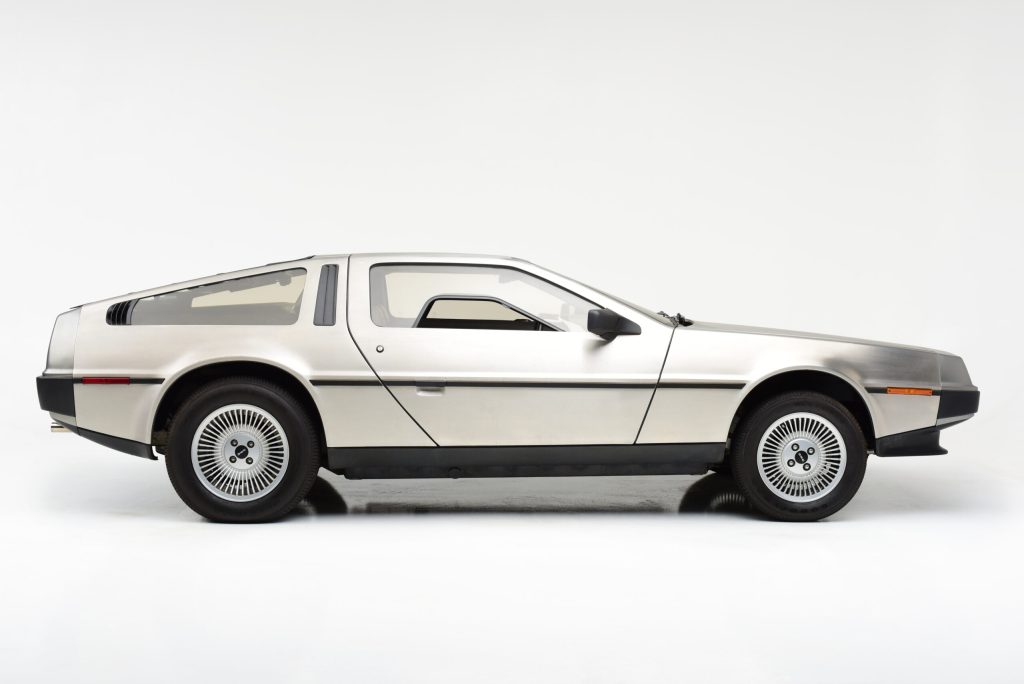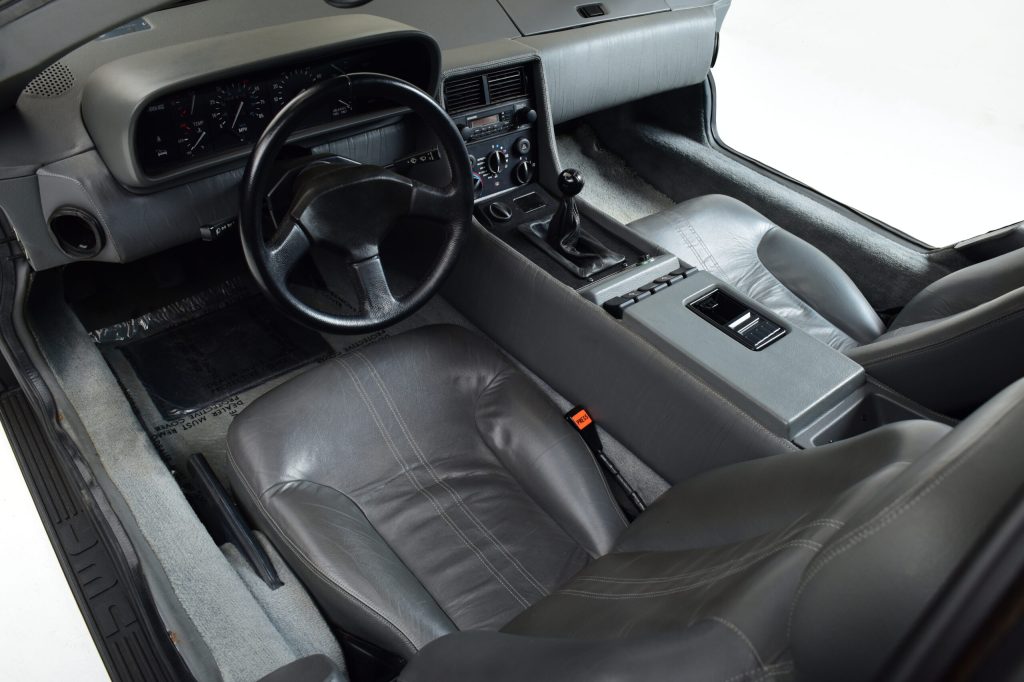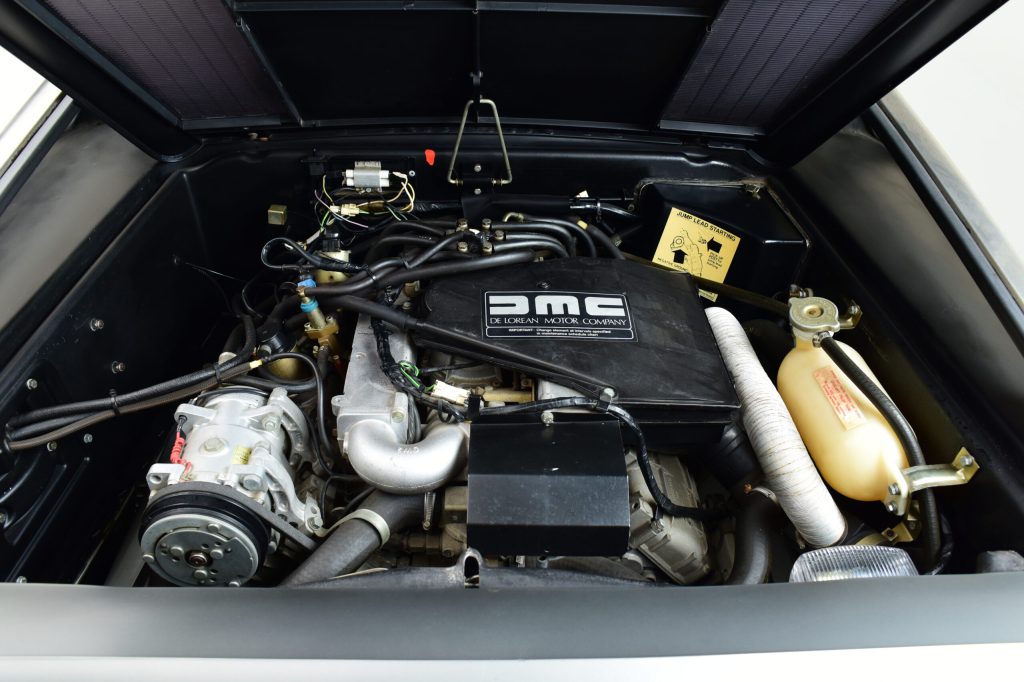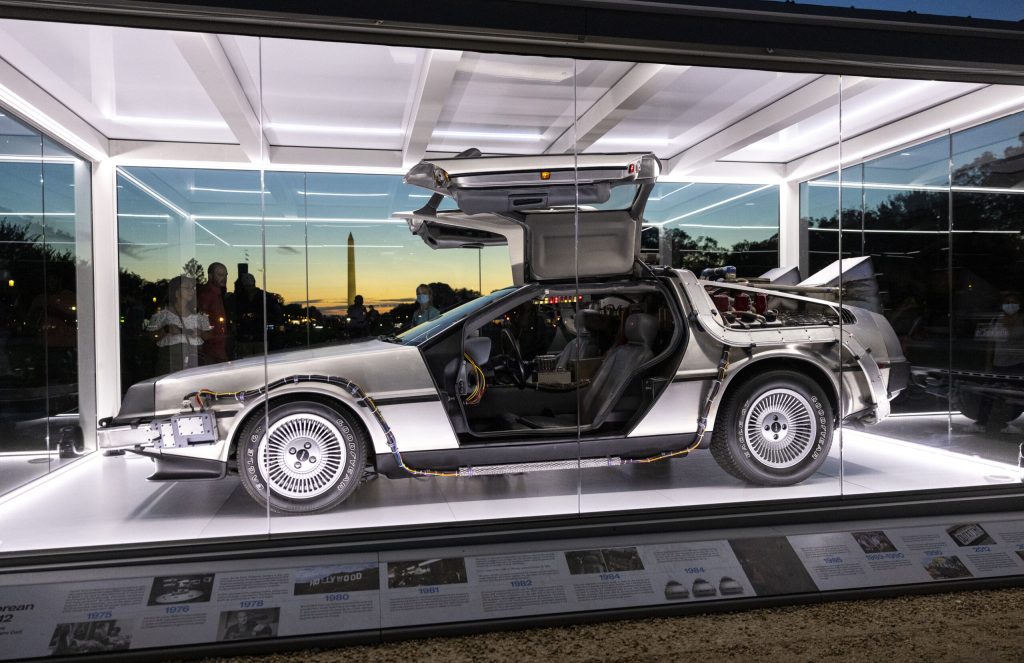DeLorean Motor Company, founded in 1975, was the most famous automotive flop since Tucker. Embroiled in scandal and allegations of fraud, the company came crashing down after its founder, John Z DeLorean, was arrested in 1982, the target of a drug-trafficking sting operation. When the car factory shut down, angry workers chucked tooling into the ocean. The DeLorean-built vehicle was a rolling punchline when Hollywood chose one as Doc Brown’s 88mph time machine in Back to the Future, which hit cinemas in 1985. But the 38 years – has it really been that long? – since the movie’s debut have been kind to DeLorean’s only model, the DMC-12. Very kind, all things considered.
A starring role as the most famous movie-car ever (other than, maybe, James Bond’s Aston Martin) certainly helps. The cultural relevance of the Back to the Future DeLorean is so massive that in 2021 it was added to the US National Historic Vehicle Register. The market for the cars is healthy, the community around them is vibrant and multigenerational, the aftermarket support for them is vast, and “new” DeLoreans are in the works thanks to the founder’s daughter. Can you say that about any other low-volume carmaker that went bust 40 years ago?


The DeLorean story is a good one, with lots of layers and many different perspectives. It has also been told many times by better, smarter writers than I, but here’s a short(ish) version. John Zachary DeLorean was the son of a Romanian-born Ford worker, but it was at General Motors that he became a golden boy. The youngest man to head a division at GM (Pontiac), he presided over the development and production of the GTO, which ignited the muscle-car explosion of the ’60s. He then headed up Chevrolet starting in 1969. Then, instead of climbing further up the GM ladder, he resigned in 1973 to start his own car company.
DeLorean met with Giorgetto Giugiaro in 1974 to pursue one of the Italian designer’s signature wedge shapes, his main wishes being for a car with an engine in back, gullwing doors, and stainless steel body. A prototype DeLorean called the DSV-1 (DeLorean Safety Vehicle) was ready in 1976. Under the skin, though, significant revisions to the structure were needed, and for this DeLorean turned to Colin Chapman and the chassis masters at Lotus. The team used a backbone very similar to the one on the Esprit, onto which a fiberglass body was mounted, and then stainless steel panels on top of that.
A planned Citroën/NSU rotary engine was also abandoned due to lack of availability, and instead DeLorean chose the 2,849-cc Peugeot-Renault-Volvo (PRV) V6, mounted in the rear and mated to either a five-speed manual or a three-speed automatic. U.S.-spec cars made 128bhp, European cars 153. Double wishbones with coil springs and telescopic shocks make up the suspension at the front, while the rear is a multi-link system, also with coil springs and telescopic shocks. Nearly two-thirds of the weight is at the back.

In 1978, DeLorean got $12.5M in investment capital from high-profile folks like Sammy Davis Jr. and Pan Am boss Juan Trippe. He had also talked the British government into backing the construction of his factory in Troubles-era Northern Ireland, and the facility opened in 1980 in Dunmurry, near Belfast, providing desperately needed jobs for 1,000 workers.
In April 1981, the first batch of American-market cars arrived in Long Beach, California. The car’s official name, DMC-12, referred to the target price of 12 grand, but base price had ballooned to around $25K—about $81K (£64,000) in today’s money. The list price eventually grew to $29,825 in 1983 and again to $34K in 1983. No domestic-based upstart had successfully gone up against the Big Three in decades, and despite the price increase, it was easy for people to root against the old guard and cheer on the new kid on the block.
That included the fine folks in the automotive media. “Our first impressions are overwhelmingly positive,” said Car and Driver magazine. “The handling is safe and satisfying, the V6 engine surprisingly mellow in its newest assignment. The interior is roomy, comfortable, and reasonably well thought out. Most important, the DeLorean passes the critical enthusiast’s test: it’s fun to drive.”


Road & Track lamented the lack of straight line oomph, concluding it was more GT than sports car, but added “the engine’s flexibility makes up for its lack of brute horsepower.” R&T was also surprised to find it “has none of the kit-car feel that many critics expected,” and with more than a bit of prescience surmised that “it may well be that the DeLorean will become a cult car, purchased for status reasons by persons wishing to be seen as individualists.”
Despite the reviews, however, the cars weren’t selling well. Funding dwindled, and a plan to restructure the company and take it public didn’t pan out. The DeLorean Motor Cars went into receivership, just in time for the launch of a new line of DeLorean-branded men’s toiletries.
In December 1982, Colin Chapman – not long after answering tough questions about missing money from his deal with DeLorean, but before he could get into serious trouble – suddenly died of a heart attack at age 54. Group Lotus’s finance director Fred Bushell was very much alive, however, and he was sentenced to three years in jail. John DeLorean, meanwhile, had been arrested in 1982 while trying to raise capital in the infamous FBI cocaine-trafficking sting operation, “Operation Full Circle.” After a five-month trial, the jury concluded DeLorean was a victim of entrapment and found him not guilty. A grand jury in Detroit also found him not guilty on multiple counts of fraud, racketeering, and tax evasion.
The ruling in the court of public opinion was another story. Despite a brilliant career, DeLorean became the eternal butt of cocaine jokes, and the former industry superstar never had another successful car venture, despite trying. He spent much of the rest of his life in and out of court and eventually sold his massive estate in Bedminster, New Jersey to a golf-course developer. In time, it wound up in the hands of Donald Trump.
The car of course was a big screen star, and DeLoreans became easily as much movie props and symbols of ’80s excess as they were cars. Only about 9,000 were built, and yet everybody knows what a DeLorean is when they see one. Does everybody want to own one? Of course not, but plenty of people do, and owning one can be surprisingly easy for an orphan performance car like this. Since parts, service, restoration and entire cars are available from the modern DeLorean Motor Company. Otherwise known as Classic DMC, it is a firm north of Houston that acquired the original company’s parts inventory, factory drawings, and logo. It also manufactures new and improved DeLorean parts. The community of DeLorean lovers is also vast, passionate and knowledgeable, and doesn’t take itself too seriously.
Always culturally relevant but not always for the right reasons, DeLoreans haven’t really been cheap for a long time, just inexpensive relative to their rarity, fame, and the segment of the market they occupied when new. Like so many cars in the 2010s and especially during the 2020s, though, DeLoreans have ridden the ’80s nostalgia synthwave. As Gen Xers who want to unleash their inner Marty McFly approach their peak earning years, the cars have become more expensive.
Over the last five years, condition #2 (Excellent) values are up 75 percent. It’s nearly tripled over the past 10, and currently it sits at £56,500. A solid #3 (Good) driver is a 40 grand prospect now, and even scruffy #4 (Fair) cars will set you back £25,100.
Without too many options in the catalog there isn’t a whole lot of variation in price not related to condition and mileage, but knock off a few percent for an automatic transmission, and generally the gray interiors are more desirable than the black ones. Cracks in the dash are common and those marvelous doors sometimes need a little extra help to open all the way, thanks to their fancy (deep breath) Grumman Aerospace–developed cryogenically preset torsion bars with gas-charged struts. Otherwise, the interiors generally hold up well. Power steering is a popular upgrade these days since the cars didn’t come with it new, and some relatively common issues include power window motors, alternators, and minor electrical gremlins. The engine may have been built in France and certainly isn’t a tire scorcher, but it is regarded as a reliable unit when maintained. As for that Lotus chassis, they were epoxy-dipped when new to prevent rust, but it’s been decades since then and the epoxy can crack, so rust is a real and difficult to detect possibility.
Most DeLoreans were sold in America, but the cars are world famous and a few have been exported. Despite their factory home in the UK, only somewhere around 15 DeLoreans were sold in right-hand drive, converted in period by a third party. There’s also something of a separate market for well-done clones of the Back to the Future time machine, and they can sell for prices as big as the car show crowds they’ll inevitably draw. Two have sold on Bring a Trailer for over $150K (£118,000).

As for the regular old DMC-12s that don’t have a flux capacitor, though, they’re still popular with a wide set of enthusiasts. Unsurprisingly, a lot of buyer interest comes from Gen Xers, with 41 percent of DeLorean insurance quotes coming from that generation. But they’re also popular with millennials, the older members of which had a taste of the ’80s and the Back to the Future sequels.
The DeLorean had plenty of ingredients to be a footnote of automotive history. It was short-lived. It wasn’t a groundbreaking performer. But those movies and the salacious story behind the cars are the double stack of cultural relevance that keeps these cars desirable. Unlike many collector cars, people don’t buy a DeLorean because it’s a revelation to drive, because it won some famous race, or because their dad had one. They buy it for the image, the history, and the doors.







I live in N. Ireland and I am not a fan of DeLorean, the British government handed out millions, maybe it was those millions John D used to buy the drugs he got caught dealing. The car was fitted with a terrible V6 Renault engine, it was probably cheap and Renault couldn’t believe their luck…..
I also live in N Ireland and was one of the team of volunteer drivers from the Ulster Automobile Club that tried to put 50,000 miles on one each of a manual and an auto on a continual 24 hour rota with a turnaround each 4 hours and a daily service built in to the schedule. After a lot of teething troubles and avoidance of the original set “rally style” routes for the 4 hour, 200 mile stint, the cars did quite well – one was replaced during the testing as the chassis was bent in an off-road incident and as the chassis repair rigs were in the US, a repair was not possible! A smooth ride, great comfort on a well surfaced road and reasonable performance. It was in the days of security road blocks and we were often stopped – not for speeding, but because the police were curious to have a closer look! I found the auto the best to drive, but the transmission suffered from overheating, probably due to it being stuffed up the tunnel in front of the rear engine – which as said in the article, was the workhorse PRV V6 fitted to Renault, Volvo and Peugeot models of the era. Happy memories.